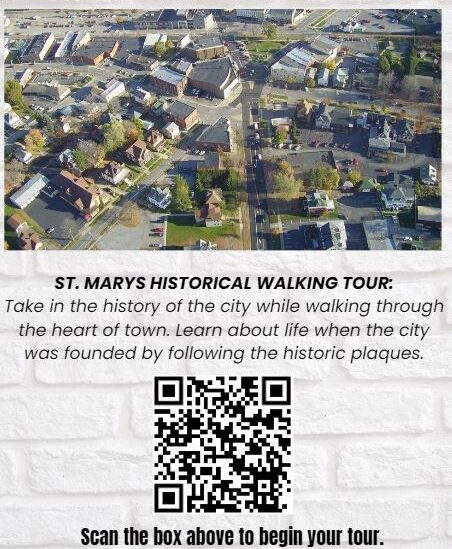History of St. Marys Pennsylvania

Some residents of St. Marys may think that the present St. Marys is a cumulative result of three distinct economic eras. The first era was not really an economic era, rather it began as a spiritual movement driven by a quest for freedom that witnessed the formation, in 1842, of a predominantly Bavarian Catholic farming commune.
In that year, a band of German Catholic immigrants composed of 15 families from Baltimore, and four families from Philadelphia settled on a 30,000 acre tract of wilderness that had been purchased from the Fox Land Company by the German Catholic Brotherhood of Philadelphia and Baltimore for $.75 an acre. St. Marys historians Charles Schaut and A.C. Brehm speculate that these early settlers came to northwestern Pennsylvania in an effort to escape the religious persecution that was emerging in the eastern cities; that they were seeking a communal experience where they were free to practice their German heritage and their Roman Catholic religion free from the influence of the Eastern Yankee society. After the official founding on December 8, 1842, what followed was a European migration, primarily Bavarian, but also including immigrants from Prussia, Baden, Hesse, Nassau, France, Wurttemberg, and Bohemia. By 1860, Saint Marys had a population of nearly 2,000 people. Basic industries were beginning to emerge and the railroad was about to become a reality which would mean that the village would almost certainly survive.
The second economic era began sometime late in the 19th century. By that time, it was evident that the community was not going to prosper agriculturally. However, lumber and mining were realistic alternatives. Although most of the regions in western and central Pennsylvania had been logged in the 1840's and 1850's, the timber industry had not faired well in Elk County. According to railroad historian William Bauer, Elk County logging activities lagged those of its neighboring counties because of the steep terrain and the lack of adequate rivers upon which to remove the massive logs. Bauer's contention is that logging in Elk County had to wait until the development of the Shay steam engine about 1874. The Shay steam engine was a short wheel base vertical drive engine that was ideal for navigating the tight steep mountainous terrain of the area.
By the turn of the century, logging and lumbering were booming and as a result, two dynamic energetic individuals who had made their fortunes in the industry were about to launch the third and major era, the industrial era.
Andrew Kaul and J.K.P. Hall had established a dominance in lumbering, mining, railroads, banking, and commerce. Late in the century, they decided to sell their mining and railroad interests. In 1898, John Byrne, a western New Yorker, bought these interests for approximately $3,000,000 which he then combined with his railroads in New York forming the P.S. & N. Railroad. Six years later, the P.S. & N. was bankrupt. However, it operated under receivership for the next 43 years, a record for an American bankrupt railroad.
With the receipts from this sale of the mines and railroad, Hall and Kaul were ripe for alternative investments. Speculation has it that they probably thought their future lay in the brewing industry. Shortly thereafter, they invested in the Saint Marys Brewery, now the site of Pure Carbon Company. Fate, however, would chart a far different course. In 1899, Andrew Kaul was convinced by a hunting friend from Sandusky, Ohio that a budding carbon graphite business held a bright future. As a result, Kaul backed John Speer in the formation of the Speer Carbon Company. The new Company manufactured carbon cores and carbon four for the dry cell battery industry.
Speer soon developed a similar hunting and fishing friendship with Harry Stackpole, the son-in-law of J.K.P. Hall. Speer convinced Stackpole that a dry cell battery business would be a good investment considering the readily available source of carbon materials. Consequently, in 1906, J.K.P. Hall and Harry Stackpole formed the Stackpole Battery Company.
In the years that followed, the carbon business developed in a spectacular way. Under the leadership of Ben Reuscher, who had worked for Speer Carbon Company, Keystone Carbon Company was organized in 1927. Keystone would go forward as a pioneer in the powder metal industry, an industry that by the late 1960's would inherit the economic leadership of the community. After World War II, Pure Carbon, Saint Marys Carbon, and National Molded Products were the next companies to be created. By 1992, more than 24 carbon graphite and powder metal companies in Elk County alone could trace their roots back to 1899 and the formation of Speer Carbon Company.
The significance of the economic impact that all of this has had on the Community is a matter of record. St. Marys certainly has enjoyed a far more prosperous past than did many of the neighboring mountain communities.
